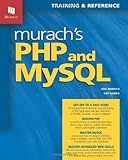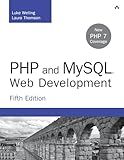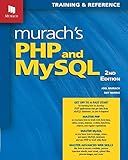Best PHP Framework Tutorials to Buy in December 2025

PHP Tutorials: Programming with PHP and MySQL: Learn PHP 7 / 8 with MySQL Databases for the Web



Murach's PHP and MySQL: Training & Reference
- SAME-DAY DISPATCH FOR ORDERS BEFORE NOON-INSTANT DELIVERY!
- MINT CONDITION GUARANTEED FOR PERFECT PRODUCT EVERY TIME.
- HASSLE-FREE RETURNS-SHOP WITH CONFIDENCE TODAY!



PHP and MySQL Web Development (Developer's Library)



PHP MYSQL Programming, For Beginners, Quick Start Guide!: PHP MYSQL Language Crash Course Tutorial (Paperbacks in 8 Hours)



PHP Complete Tutorial With Examples Beginner to Expert In Less Than 4 Hour



The 24 Hour PHP Tutorial



Murach's PHP and MYSQL: Training & Reference



PHP and MySQL for Dynamic Web Sites: Visual QuickPro Guide



PHP MySQL: PHP MySQL Programming, In 8 Hours, For Beginners, Crash Course Textbook: PHP MySQL Language, Learn Coding Fast & Exercises


To get the current URL in CakePHP, you can use the following code:
// Inside a controller $currentUrl = $this->request->here();
// Inside a view $currentUrl = $this->Url->build(null, true);
Explanation:
- Inside a controller, you can retrieve the current URL using $this->request->here(). This method returns the full URL of the current request.
- Inside a view, you can use $this->Url->build(null, true) to generate the current URL. The build() method, when called without any arguments, constructs a URL using the current request's URL.
By utilizing these methods, you can easily obtain the current URL in CakePHP for further processing or display purposes.
How can I get the current URL in CakePHP from a console command?
In CakePHP, you can use the router class to get the current URL in a console command. Here's an example of how you can do it:
- Start by importing the necessary classes in your console command file:
use Cake\Routing\Router; use Cake\Console\Command;
- In the execute() method of your console command, use the Router class to get the current URL:
public function execute(Arguments $args, ConsoleIo $io) { // Get the current URL $url = Router::url('/', true);
// Print the URL
$io->out("Current URL: $url");
}
In the example above, Router::url('/', true) generates the absolute URL for the root of the application. You can replace '/' with any other valid route URL to get the current URL for that route.
Now, when you run your console command, it will output the current URL.
Can the current URL be obtained from any controller or view file in CakePHP?
Yes, the current URL can be obtained from any controller or view file in CakePHP using the Router class.
In a controller, you can use the following code to obtain the current URL:
use Cake\Routing\Router;
$currentUrl = Router::url(null, true);
In a view file, you can use the following code to obtain the current URL:
use Cake\Routing\Router;
$currentUrl = Router::url($this->request->getRequestTarget(), true);
The url() method of the Router class takes two parameters. The first parameter specifies the route array or URL string, and the second parameter is a boolean that determines whether to include the base URL in the result. By passing null as the first parameter, we get the current URL based on the current route and request.
How can I generate a URL from the current URL in CakePHP?
In CakePHP, you can generate a URL from the current URL using the Router class. Here's an example of how to achieve this:
use Cake\Routing\Router;
// Get the current URL $currentUrl = Router::url(null, true);
// Generate a new URL based on the current URL $newUrl = Router::url([ '_full' => true, // Include the full base URL 'controller' => 'your_controller', 'action' => 'your_action', 'param1' => 'value1', 'param2' => 'value2' ]);
echo $newUrl;
In the above example, first, we get the current URL using Router::url(null, true). Then, we use Router::url() again to generate a new URL by providing the desired controller, action, and any other parameters that you want to pass. Set _full to true if you want to include the full base URL in the generated URL.
Finally, you can echo the new URL or use it as needed in your application.
How can I redirect to the current URL in CakePHP?
In CakePHP, you can redirect to the current URL by using the $this->redirect() method with the current() function as the argument. Here's an example:
$this->redirect($this->request->referer(true));
The referer() method of the request object return the referrer URL. By passing true as an argument, it returns the full URL. The redirect() method then redirects the user to the referer URL.
Note: The referer() method will return null if there is no referrer URL provided. In that case, you might want to specify a default URL to redirect to.
Additionally, you can also use the Router::url() method to get the current URL and redirect to it. Here's an example:
$this->redirect(Router::url('/', true));
In the above code, Router::url('/') returns the current URL. The redirect() method then redirects the user to that URL.
How can I retrieve the current URL in CakePHP?
In CakePHP, you can retrieve the current URL using the Router class.
You can access the current URL in your CakePHP controller using the following code:
$currentUrl = $this->request->getRequestTarget();
Alternatively, you can retrieve the URL of the current page in the view using the following code:
$currentUrl = $this->request->getPath();
These methods will return the URL as a string, which you can store in a variable or use for further processing as needed.
Is there a way to get the current URL without the domain in CakePHP?
Yes, you can use the request object in CakePHP to get the current URL without the domain. Here is an example:
$currentUrl = $this->request->getRequestTarget();
This will give you the current URL without the domain part. For example, if the current URL is http://example.com/foo/bar, the result would be /foo/bar.
Can I get the current URL inside a CakePHP model?
No, you cannot directly access the current URL inside a CakePHP model because models are not aware of the current request or any data related to the HTTP request. Models are meant to handle database operations and business logic, while the request and URL handling are handled by the controller layer.
If you need to access the URL or request data in a model, you should consider passing the necessary data from the controller to the model as a parameter during method calls.
In CakePHP, the recommendation is to handle the request-related data in the controller layer and pass it to the model layer as needed.
Can I modify the current URL before using it in CakePHP?
Yes, you can modify the current URL before using it in CakePHP. CakePHP provides various methods to modify and manipulate URLs.
One common use case is to add or modify query parameters in the URL. You can use the Cake\Http\ServerRequest object to get and modify the current URL. Here's an example:
use Cake\Http\ServerRequest;
// Get the current request object $request = ServerRequest::createFromGlobals();
// Get the current URL $currentUrl = $request->getRequestTarget();
// Modify the URL by adding a query parameter $newUrl = $request->withQueryParams(['param' => 'value'])->getRequestTarget();
In the above example, the ServerRequest::createFromGlobals() method creates a new instance of the ServerRequest object from the global PHP variables. Then, the getRequestTarget() method is used to get the current URL. Finally, the withQueryParams() method is used to add a query parameter to the URL, and the getRequestTarget() method is called again to get the modified URL.
You can also manipulate other parts of the URL, such as the path or the host, using various methods provided by the ServerRequest object. Refer to the CakePHP documentation for more details and available methods for URL manipulation.
Is there a way to get the base URL of the CakePHP application?
Yes, you can get the base URL of the CakePHP application using the Router class. To get the base URL, you can use the url method with the 'base' key. Here's an example:
use Cake\Routing\Router;
$baseUrl = Router::url('/', true);
This will return the base URL of the CakePHP application, including the protocol (http:// or https://) and the domain name.
